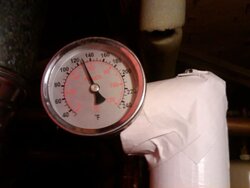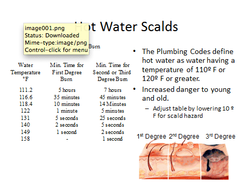Hi All:
Been burning the Garn since Nov. 2010, not a drop of oil. Great! I have been burning spruce all this summer to heat my DHW. I took another step at better insulating the Garn and can readily get 3 days from a burn (up to 190). Great!
What do folks set their DHW tank to during the summer? I dropped mine down to 110 and I think I can go 4 days if I desire. Don't need to hottest water for the summer for shower, dishwasher heats the water a bit, and haven't noticed a problem with the laundry. I have heard of issues with the indirect DHW being set low, with critters in the water, but I don't know if this is a real concern or not. Haven't had any problems here...
Any comments? Won't be long until the snow flies....actually looking forward to the end of this heat, but I always am.
Been burning the Garn since Nov. 2010, not a drop of oil. Great! I have been burning spruce all this summer to heat my DHW. I took another step at better insulating the Garn and can readily get 3 days from a burn (up to 190). Great!
What do folks set their DHW tank to during the summer? I dropped mine down to 110 and I think I can go 4 days if I desire. Don't need to hottest water for the summer for shower, dishwasher heats the water a bit, and haven't noticed a problem with the laundry. I have heard of issues with the indirect DHW being set low, with critters in the water, but I don't know if this is a real concern or not. Haven't had any problems here...
Any comments? Won't be long until the snow flies....actually looking forward to the end of this heat, but I always am.




